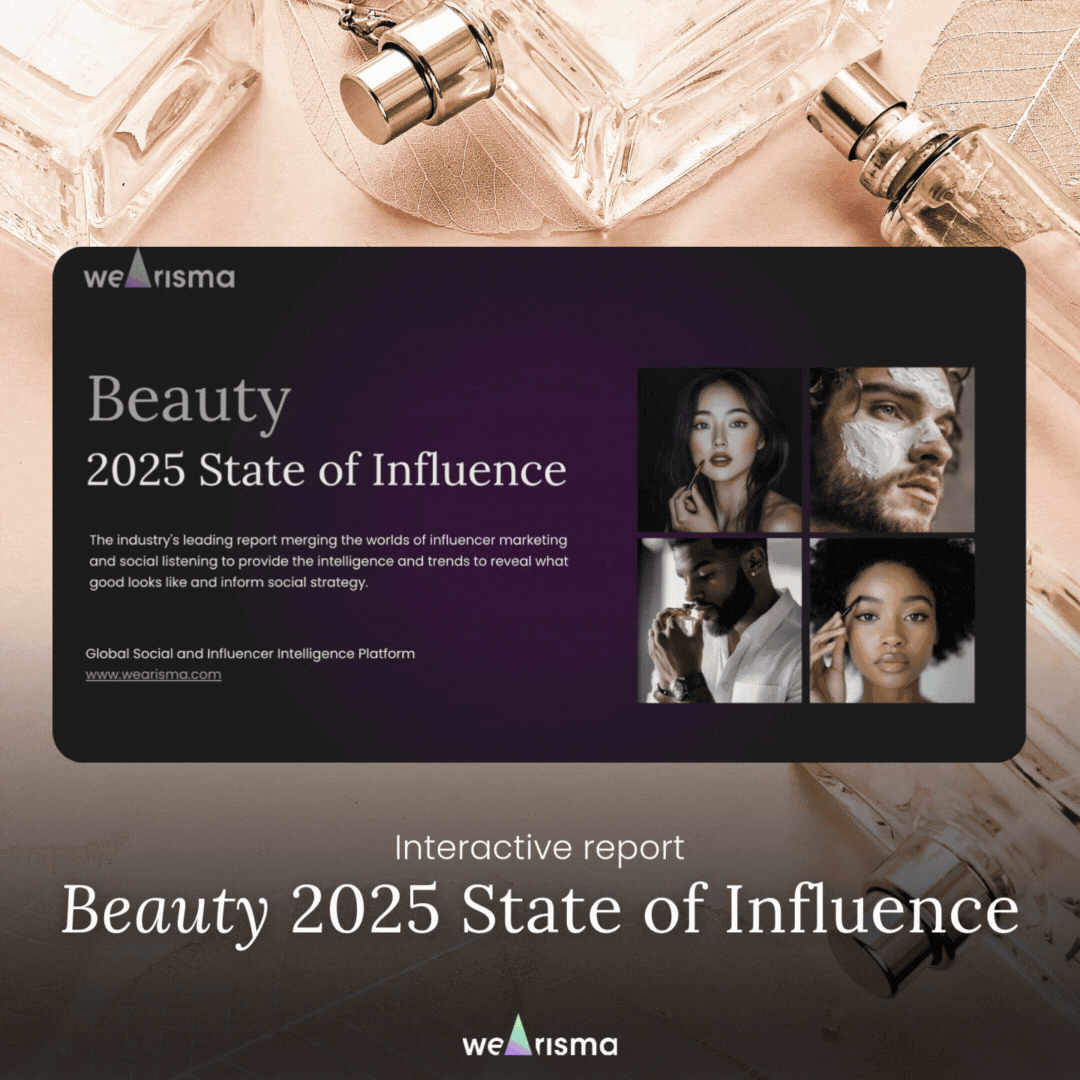When Dunkin’ partnered with TikTok star Charli D’Amelio to create “The Charli” drink, it wasn’t just a marketing win – the campaign drove a 57% increase in app downloads and boosted cold brew coffee sales by 20% (source). Behind successful campaigns like these are sophisticated influencer analytics platforms that enable brands to measure, predict, and optimize their influencer marketing investments. As the creator economy grows more complex, these analytics platforms have become essential tools for data-driven marketing teams.

Published On: November 7, 2024
Unlike basic influencer discovery tools, influencer analytics platforms provide deep insights into campaign performance and audience behavior. These sophisticated systems help brands make data-driven decisions about their influencer partnerships through three core capabilities that transform how marketing teams approach creator collaborations.
1. Audience Intelligence
Understanding who you’re really reaching sits at the heart of successful influencer marketing. Modern analytics platforms illuminate the complex web of audience relationships, showing brands not just demographic data, but deep insights into how audiences engage, when they’re most active, and what truly resonates with them. This level of understanding transforms how brands approach creator partnerships, enabling them to move beyond surface-level metrics and build campaigns that genuinely connect with target audiences.
Key benefits of advanced audience intelligence include:
• More informed creator partnerships based on audience alignment
• Better content strategies driven by audience interest patterns
• Optimized campaign timing based on engagement patterns
2. Performance Measurement
Gone are the days when likes and comments told the whole story. Today’s performance measurement capabilities provide a comprehensive view of campaign impact across multiple dimensions. Marketing teams can now track how content performs across different platforms, understand which messaging approaches drive the strongest results, and measure the long-term impact on brand perception and awareness.
This deeper level of performance insight enables brands to:
• Track campaign effectiveness across multiple metrics
• Understand which content strategies drive real results
• Make data-backed optimization decisions
3. ROI Tracking
Perhaps the most transformative aspect of modern influencer analytics platforms is their ability to connect creator activities directly to business outcomes. By implementing sophisticated tracking and attribution systems, brands can now understand the true value of their influencer investments. This goes beyond simple engagement metrics to track actual business impact, from direct sales attribution to brand awareness lift.
Marketing teams can now effectively:
• Link influencer activities to concrete business results
• Compare performance across different creators and campaigns
• Scale successful strategies based on proven ROI
“The key to success lies not just in having access to these analytical capabilities, but in using them strategically to build stronger, more authentic creator partnerships that deliver measurable business results.”

Solving Key Marketing Challenges
The rise of influencer marketing has brought with it a unique set of challenges that analytics platforms are uniquely positioned to address. Primary among these is the authenticity challenge – how to ensure that influencer partnerships genuinely resonate with target audiences while delivering measurable business results.
Analytics platforms tackle this challenge by providing deep insights into audience engagement patterns and content performance. This allows brands to identify creators whose audience truly aligns with their target market, rather than simply focusing on reach metrics. By understanding not just who follows a creator, but how their audience engages with content, brands can build more authentic and effective partnerships.
The Measurement Evolution
Traditional marketing metrics often fall short when applied to influencer campaigns. Analytics platforms bridge this gap by providing comprehensive measurement frameworks that account for the unique nature of creator partnerships. This evolution in measurement capabilities has transformed influencer marketing from a largely intuitive channel into one driven by concrete data and clear ROI metrics.
Key areas of measurement advancement include:
• Multi-touch attribution modeling
• Cross-platform performance tracking
• Long-term impact assessment
Strategic Implementation
Successfully implementing an influencer analytics platform requires a thoughtful approach that aligns technology with business objectives. The process begins with clearly defining what success looks like for your organization. This might include specific KPIs around brand awareness, engagement rates, conversion metrics, or other business objectives.
Once objectives are established, the focus shifts to building a measurement framework that captures relevant data points while remaining flexible enough to evolve with your program. This framework should encompass both immediate performance metrics and longer-term strategic indicators that align with your brand’s growth goals.
Building for Scale
As influencer programs grow, analytics platforms become increasingly crucial for maintaining efficiency and effectiveness. A well-implemented analytics system allows brands to scale their influencer programs while maintaining quality and performance. This scalability comes from the ability to quickly identify successful patterns and replicate them across new campaigns and creators.
Critical elements for scalable success include:
• Standardized measurement frameworks
• Automated performance tracking
• Clear optimization protocols
Looking Ahead
The future of influencer analytics promises even more sophisticated capabilities as technology continues to evolve. Artificial intelligence and machine learning will likely play an increasingly important role in predicting campaign performance and identifying optimal creator partnerships. These advances will enable brands to be even more strategic in their influencer marketing investments.
Yet amidst this technological evolution, the fundamental goal remains unchanged: helping brands build more effective, authentic, and profitable creator partnerships. Success will continue to depend on how well brands use these tools to understand their audiences, measure their impact, and optimize their approaches.
Influencer analytics platforms have fundamentally transformed how brands approach creator partnerships. By providing deep insights into audience behavior, content performance, and campaign ROI, these platforms enable brands to make smarter, more strategic decisions about their influencer investments. As the creator economy continues to evolve, the role of analytics in driving successful influencer marketing programs will only grow in importance.
The key to success lies not just in having access to these analytical capabilities, but in using them strategically to build stronger, more authentic creator partnerships that deliver measurable business results. Brands that embrace this data-driven approach while maintaining focus on authentic audience connections will be best positioned for success in the evolving creator economy.
References
[1] Dunkin’ Case Study – “Influencer Marketing Case Studies,” Neal Schaffer. Available at: https://nealschaffer.com/influencer-marketing-case-studies
Keep informed with the latest trends, reports, and case studies from the world of influencer marketing.

WeArisma’s 2025 State of Luxury Report has been featured WWD! Amongst the numerous metrics for luxury brands to benchmark against competitors, we highlight Resonance and Virality as crucial, underlooked criteria.

WeArisma’s Beauty 2025 State of Influence Interactive Report – Your Essential Guide to Beauty Brand Success in the Digital Age.
The beauty landscape is evolving. Traditional strategies no longer guarantee success – Resonance, Virality, and Authentic Engagement are beginning to define market leaders.
Our latest Beauty 2025 State of Influence Report uncovers the key shifts shaping Skincare, Makeup, and Fragrance, and the strategies fueling sustained impact.
Influential voices have delivered outstanding Ripple Impact for the world’s top-performing beauty brands, collectively reaching and engaging far more consumers than brand owned social media channel. They:
Reached up to 26X more consumers, generated up to 19X higher EMV, produced up to 73X more content, and drove up to 83X greater Engagement
This interactive report lets you explore key performance metrics, compare data across countries, and discover which luxury brands lead the rankings.
Stay up to date with the latest industry trends and topics
Discover how WeArisma can help you harness the power in influence, grow your brand’s presence, and achieve measurable success.
WeArisma combines the power of AI, influencer marketing and social listening to deliver smarter, scalable strategies with real impact.